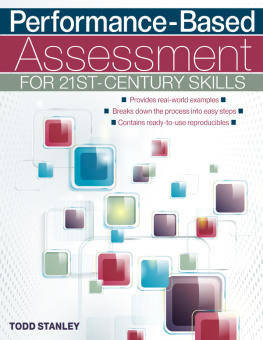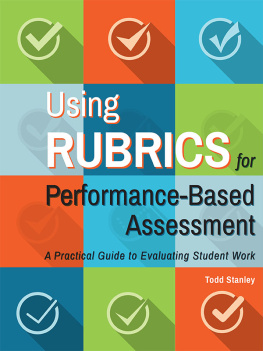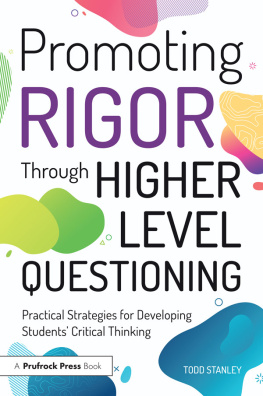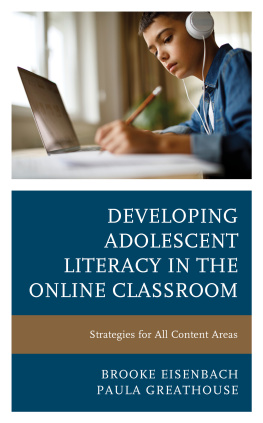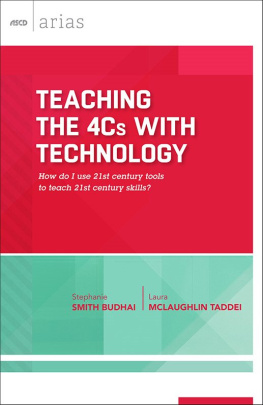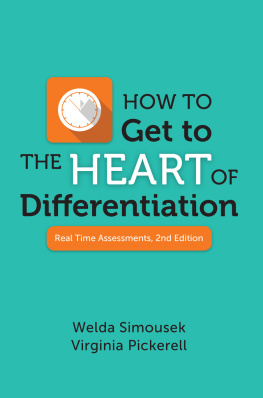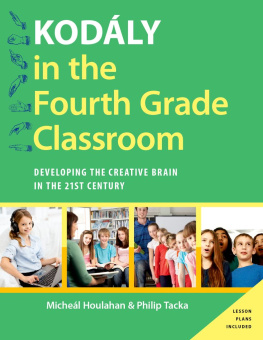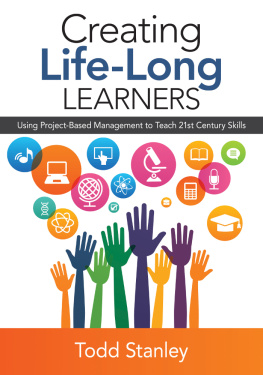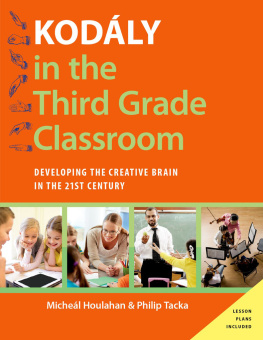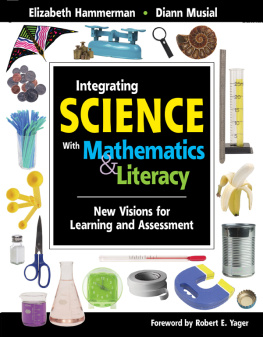

Copyright 2014 Prufrock Press Inc.
Edited by Rachel Taliaferro
Cover design by Raquel Trevino and layout design by Allegra Denbo
ISBN-13: 978-1-61821-275-7
The purchase of this book entitles the buyer to reproduce student activity pages for single classroom use only. Other use requires written permission of publisher. All rights reserved.
At the time of this books publication, all facts and figures cited are the most current available. All telephone numbers, addresses, and website URLs are accurate and active. All publications, organizations, websites, and other resources exist as described in the book, and all have been verified. The author and Prufrock Press Inc. make no warranty or guarantee concerning the information and materials given out by organizations or content found at websites, and we are not responsible for any changes that occur after this books publication. If you find an error, please contact Prufrock Press Inc.
 | Prufrock Press Inc.
P.O. Box 8813
Waco, TX 76714-8813
Phone: (800) 998-2208
Fax: (800) 240-0333
http://www.prufrock.com |
Table of Contents
Introduction
Before you begin to figure out just exactly how you are going to use performance-based assessment (PBA) in your classroom, it is important to have a good understanding of the subject matter. Math teachers need to understand equations in order to teach them to students, and language arts instructors need to have a good grasp of grammar if they expect their students to follow suit. If you want to use PBA in your classroom and make it effective, it is important you understand what it is and what you can do with it. Like most things in education, there can be multiple interpretations of a concept. Let us start with a simple definition and work our way to a more complex one.
According to the Project Appleseed (2010) website, the Office of Technology Assessment of the U.S. Congress describes performance assessments as: testing that requires a student to create an answer or a product that demonstrates his or her knowledge or skills (para. 2). That is a pretty simple and broad definition. A clever gifted student could probably make a compelling argument that filling in bubbles on a multiple-choice test is creating an answer, but in the spirit of the definition, objective assessments such as multiple-choice tests do not qualify as performance-based assessments. However, writing an essay does qualify as creatingthe student must create his answer, deciding how to state the information he wants to include to construct his thesis. Again, our illustrious gifted student might make an argument that this is not a performance. He might say that a performance should be a display of skills, like acting out a play or playing a musical instrument. Writing an essay is a display of skills, howeverone that demonstrates what the student knows. That much is evident from this more complex definition of performance-based assessment from Project Appleseed (2010):
Performance assessment requires students to demonstrate knowledge and skills, including the process by which they solve problems. Performance assessments measure skills such as the ability to integrate knowledge across disciplines, contribute to the work of a group, and develop a plan of action when confronted with a new situation. (para. 1)
The key word in this definition is process. Performance-based assessment is a process. Student learning is not displayed only in the summative assessments traditional classes give at the end of a unit. What students learn is on display throughout the process of working on an activity. Sometimes this is a concrete product, such as a physical object that students build, or an intangible product, such as a fact they display through an essay. Other times the performance is less concrete, when a student is asked to think creatively or to overcome a problem. Getting the right answer is not necessarily the end-all, be-all goal. How students arrive at an answer can be just as, if not more, important than the answer itself.
Given this definition, it probably sounds as if just about anything could be considered a performance-based assessment. However, there are certain guidelines PBAs generally follow. For instance, the National Science Foundations (2003; Stevenson, 2001) science and engineering indicators suggest performance-based assessments usually:
allow students to create their own response rather than to choose between several already created answers,
are criterion-referenced, or provide a standard according to which a students work is evaluated rather than in comparison with other students,
concentrate on the problem-solving process rather than on just obtaining the correct answer, and
require that trained teachers or others carefully evaluate the assessments and provide consistency across scorers (Stevenson, 2001, para. 4).
We will explore these guidelines in much more depth later in the book.
These different definitions of and parameters for PBA are all very well and good, but what does the actual process look like? If I walked into a class in which a teacher was using performance-based assessment, what would I see? Below are some examples according to Project Appleseed (2010):
group projects enabling a number of students to work together on a complex problem that requires planning, research, internal discussion, and group presentation;
essays assessing students understanding of a subject through a written description, analysis, explanation, or summary;
experiments testing how well students understand scientific concepts and can carry out scientific processes;
demonstrations giving students opportunities to show their mastery of subject-area content and procedures; or
portfolios allowing students to provide a broad portrait of their performance through files that contain collections of students work assembled over time (para. 3).
Now that you have a basic understanding of what performance-based assessment is and what it might look like, it is time to explain this books three goals: (1) to convince you why performance-based assessment should be used over other methods of teaching, (2) to show how it can be used in the classroom for effective student understanding, and (3) to show where it can take you as a teacher in your professional development.
I hope this introduction gives you a basic understanding of what performance-based assessment is. The first chapter of this book will make a compelling case for why a teacher should use performance-based assessment and the 21st-century skills it builds in students. will take the concept of authentic assessment, a valuable part of any PBA classroom, and show you how to achieve it. The more authentic the assessment, the more enduring the learning is going to be. The book will conclude with words of advice on how to make the PBA process work for you and how to get the most from it in your classroom. There are three appendices. The first includes reproducibles that can be used to shape your own classroom using performance-based assessment. The second appendix contains a sample lesson plan for a mock trial in an elementary classroom. The third appendix includes lessons from some major content areas and different grade levels so that you have an idea of what PBA looks like and what can be done with it.
Next page
